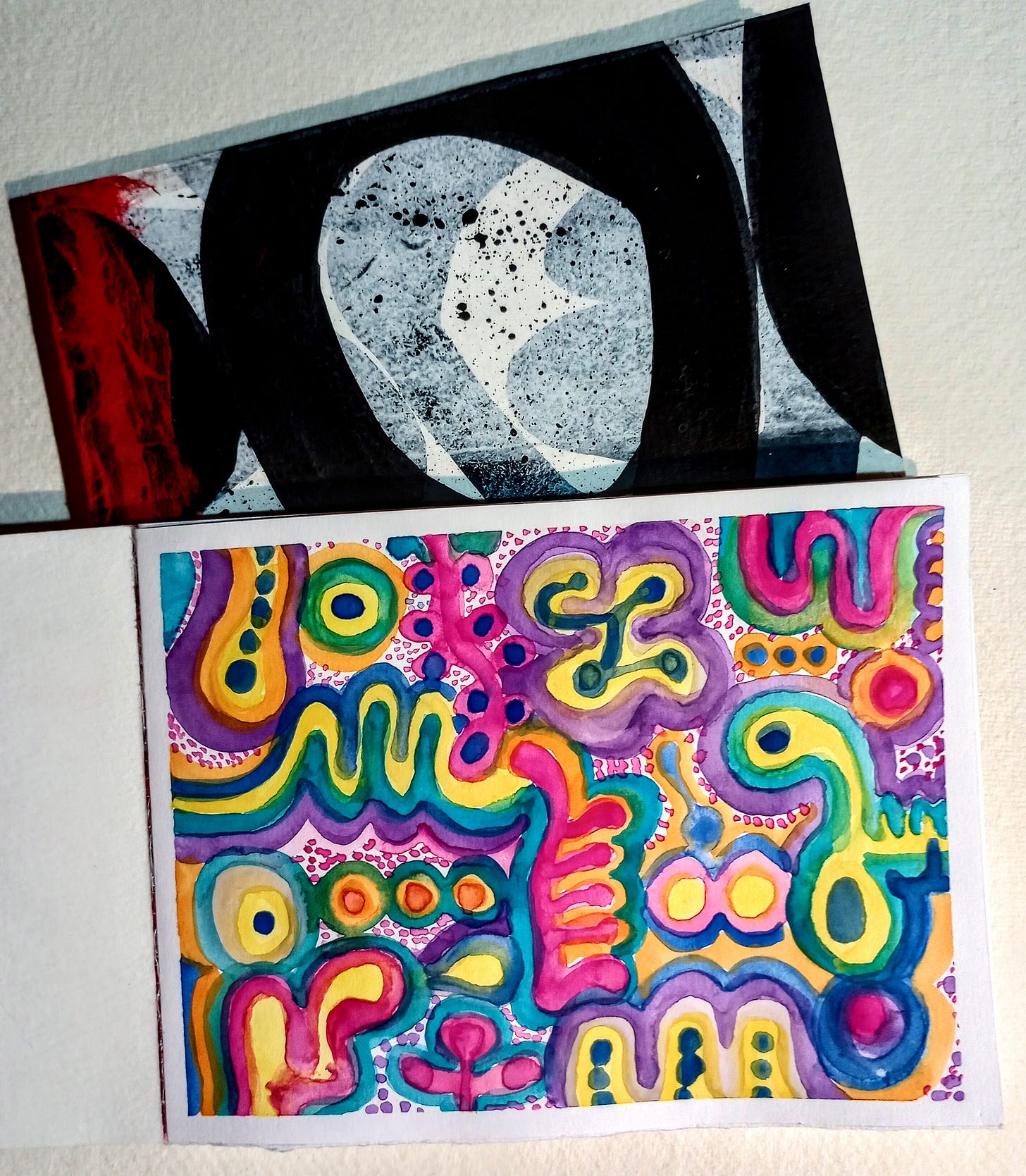Nothing Left But the Sky
#169: It seems strange that so many people in my extended family knew my grandmother, but I did not. Still, I have a couple stories about her which make me feel that, somehow, I did know her.
THEN & NOW
In “Depth of Field,” I noted that I had learned another name for my maternal grandmother Matea: “Papo Tiang” in the Sambal language. But my cousin Nina later texted me to let me know that she had another name (or formal address) for my grandmother. She was told to call her “Nanay” which can mean both mother and grandmother in Tagalog and Filipino. So I suppose if I had known her I might’ve called her Nanay Matea. Or perhaps Nanay Tiang.
It seems strange that so many people in my extended family knew my grandmother, but I did not. Regarding her personality, I’ve only heard that she was “strict,” not afraid to express her anger, and did not suffer fools—especially male fools. I suspect (and hope) that she had a softer side and a sense of humor. My mother’s personality certainly encompassed that spectrum, and perhaps she got it from her nanay.
Still, I do have a couple of my own stories about my grandmother which make me feel that, somehow, I did know her. Here is one:
There was a time in my adult life when I was experiencing a lot of anger, and it was directed towards my husband, whom I would later divorce. I won’t get into the reasons for that here. But this anger, in the form of churning, angry thoughts—whether I was around my husband or not—was something I was experiencing for an extended period, and it was getting me down. I knew it wasn’t good for me to be feeling that way all the time, and I didn’t feel like I was in control of it.
One night, I was fast asleep and had a nightmare. I was in a “madhouse“ of some sort. The scene reminded me of an old film, The Snake Pit, I had seen long ago. It looked like the interior of a huge, dark cavern, and I was surrounded by people who were clearly “mad” and not in control of their emotions.
Suddenly, an old woman with long hair appeared out of nowhere—but she was not like the rest. She looked like an angry ghost, and she began to grow taller and taller, until she came close to filling the entire cavern, emitting her angry energy. It was so frightening that I immediately woke up.
As I lay there in bed, I thought about the experience. I felt that the old woman was my grandmother, in some mythical disguise, and that somehow her anger and mine were similar. During that period, I had been experimenting with lucid dreaming. I had learned how to become conscious during a dream so that I could experience things within the dream state.
I decided that I needed to confront the issue, although I wasn’t sure how. Finally, I gave myself the suggestion to fall asleep and become conscious within the (hopefully same) dream.
As soon as I fell asleep I was immediately returned to that scary moment in the madhouse cavern. The angry woman/grandmother/crone was still there, and she was growing larger and larger. Soon, the top of the cavern’s ceiling disappeared, but she kept growing up and up into the starry night sky.
I reached up—somehow I had grown taller, too—and embraced the crone’s gigantic, angry energy. At that moment, we burst into a shower of stars and sparks, finally disappearing altogether. There was nothing left but the sky.
I still had anger, of course, but I woke up knowing something was different, that I could work with these feelings.
ART
I’m still making little sketchbooks. Currently I’m using 108 lb Fabriano mixed media paper inside, which is a strong stuff. But I realized that I should test the sketchbooks to make sure that the binding holds for various (mixed) media. Below is my first painting in watercolor (the top shows part of the cover of one of the sketchbooks). I taped the margins, and the tape pulled off clean—no torn edges. Next, maybe I’ll try collage. This will be fun!
RABBIT HOLE
“How Lucid Dreaming Works,” a quick summary by Matthew Walker, a professor of neuroscience and psychology at UC Berkeley:
Lucid Dreaming in the indigenous Bon (Tibetan) “dream yoga” tradition, by Tenzin Wangyal Rinpoche:
“Contemporary Filipino Artists and Historical Memory” an article about Filipino American artist, poet, musician, and filmmaker Greg Roensch, by Maria Victoria Yujuico.
It seems only natural that diaspora artists turn to the past as a source of inspiration. Their work can be rooted in family stories, religious beliefs, or politics. Artists in exile are uprooted from the Philippines they once knew, willingly or not. So, in one way or another, they choose to look back, remembering different things and perhaps forgetting others, in order to process what is often a great sense of loss. —Maria Victoria Yujuico
“Making Art and Being a Storyteller” by Parker Thornton, on Substack.
“Overwhelming Frippery” and satirical fashion in paintings by Volker Hermes.
Artist/photographer Mari Katayama’s relationship with “nature“ and artifice in her embodied art. I find the video and her words to be quite moving:
SOUNDINGS
Greg Roensch reads a very apt poem for these times (even though it was written a few years ago) at Write from the Gut—and Roensch certainly does that here (Content Warning: strong language!):
Jazz vocalist Mon David with Larry Koonse, and Josh Nelson — performing “As Long as You’re Living”1 from the second edition of the album DNA Continuum:
Sincere appreciation to all of you who read Eulipion Outpost regularly, and to those who have subscribed here or donated on my Ko-fi page to support my efforts.
My ongoing appreciation goes to the Mysterious M. for his editing.
Website and blog: Jeanvengua1.wordpress.com
Links List on a just-for-fun, old-school Neocities site that I built.
Eulipion Outpost is a reader-supported publication. To receive new posts and support my work, consider becoming a free or paid subscriber.
Thanks to Leny Strobel for the tip on Mon David!







You might be interested in my article on "Near-Lucid Dreams and Related Phenomena:
Humorous Commentaries on the Human Condition", https://figshare.com/articles/preprint/Near_Lucid_Dreams_and_Related_Phenomena_Humorous_Commentaries_on_the_Human_Condition/1506754?file=50339415
What an interesting post.
I heard Nanay comes from the Chinese Nai nai for mother.
I’m glad to put a name to my experience in dreams! Sometimes when I wake up, I go back to sleep to continue my dream. The best example of lucid dreaming is when I solved a Sunday New York Times crossword puzzle.
The YouTube video of the monk was eye-opening—to think that one-third of our lives is spent dreaming. Filipinos put a big emphasis on the meaning of their dreams. My daughter and I keep dream journals.
Thanks for sharing the videos this article. I particularly like Mari Katayama’s art.